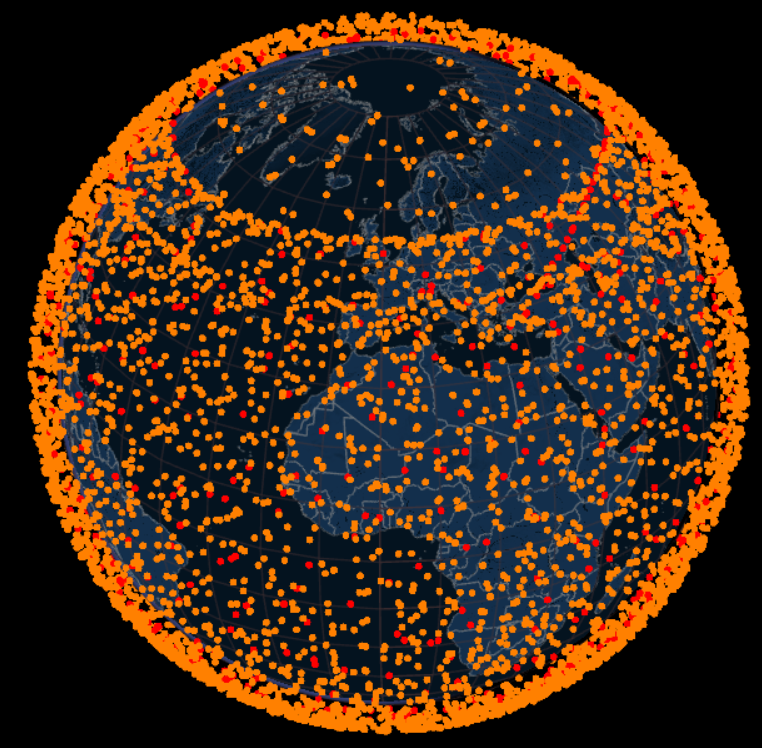☀️ Constellations of LEO Satellites, the new gold mine?
- Chloé Durand
- Sep 8
- 3 min read
Updated: 12 hours ago

Introduction
Not a day goes by without an article about the new Eldorado of low Earth orbit (LEO) satellites.
Whether for reasons of “sovereignty,” business opportunities in new markets, national security, or technical alternatives to terrestrial networks, LEO is a hot topic!
In short, there is a certain feverishness in this sector, both technically and financially. Space is becoming increasingly crowded, financing needs are reaching new heights, and returns on investment are questionable.
Let's start with a few definitions
What is a “GEO”?: A geostationary satellite (GEO) is in geostationary orbit, an orbit that can only be reached at an altitude very close to 35,786 km.
What is a “LEO”?: A low Earth orbit (LEO) satellite orbits the Earth at an altitude lower than that of geostationary satellites. LEO satellites orbit between 2,000 and 200 kilometers above the Earth.
Starlink has more than 7,000 satellites, while Eutelsat OneWeb has deployed around 700, for a total of 7,961 as of July 22.
Dimensions:
OneWeb Arrow: 1 m x 1 m x 1.3 m, weight ~147 kg.
Starlink V1: 2.8m x 1.4m x 0.2m. Weight 260kg.
Their commercial targets are different: B2C for Starlink, B2B for OneWeb.
Let's estimate latency/GEO
The GEO satellite is not exactly fixed, as we tend to say for simplicity's sake.
It rotates with the Earth at the same speed as the latter, giving the impression of being fixed when observed from the ground.
The reference values vary depending on the location of your GEO and the customer's ground antenna. At the equator, with the GEO satellite directly above you, the hop will be exactly 36k km x 2 = 72k km round trip; as you move away from the equator, the satellite is “less visible.” At the edge of GEO coverage, you are often 40 km away instead of 36 km, or about 80 km round trip.

The speed of propagation of an electromagnetic wave is close to that of light, i.e., 300,000 km per second. Thus, for 80 km, the RTD would be 80 / 300,000 ~ 300 ms.
Once you add ground equipment, teleport, routing, customer site, etc., you can easily reach 500/800 ms, depending on use cases and network topology.
What performance characteristics are reported by operators?
Below is a non-exhaustive list of expected upstream, downstream, and round-trip latency data for a few constellations and other sources.

Source courtesy by CESAR/CNES©
Who is really responsible for latency?
All decisions are made along the way. Each data packet passes through a series of devices:
Modems for modulation/demodulation
Routers for routing
Multiplexers for traffic aggregation
Encryption systems for security
QoS engines that prioritize voice over video or critical data over bulk data
Is it possible to continuously monitor the actual throughput and latency of your links without reaching your quotas?
In the world of satellites, bytes remain a scarce commodity. Like 5G, where pricing depends on volume, the same constraint exists and is even more restrictive.
So how can you continuously monitor your connections without exceeding your quotas? LIFBE, the very low consumption measurement method (4MB vs. 200MB for iPERF3 in throughput/max).
Latencetech provides 6 .yaml file configurations to easily perform your measurements.

A case study of Satcom link monitoring
What about D2D ?
What if tomorrow, our smartphones could pick up a satellite signal without additional equipment?
This is the ambition of D2D, or Direct to Device, a major technological advance for connecting isolated areas and strengthening network resilience, particularly in times of crisis.
The Member States, meeting within the RSPG, have published an opinion clarifying the different D2D models (D2D-IMT, D2D-MES, D2D-IoT) and recommending certain actions related to frequency sharing issues, while also highlighting issues of security, sovereignty, and resilience.
These discussions are also part of the preparations for the 2027 World Radiocommunication Conference (WRC-27), which will establish an international framework for D2D in mobile bands.
Reminders for newcomers:
Marc Soulacroup





Comments